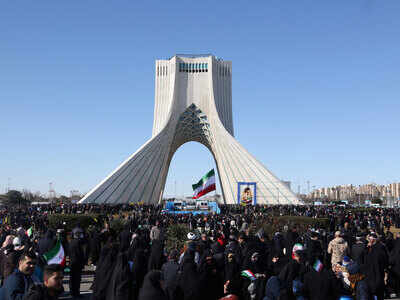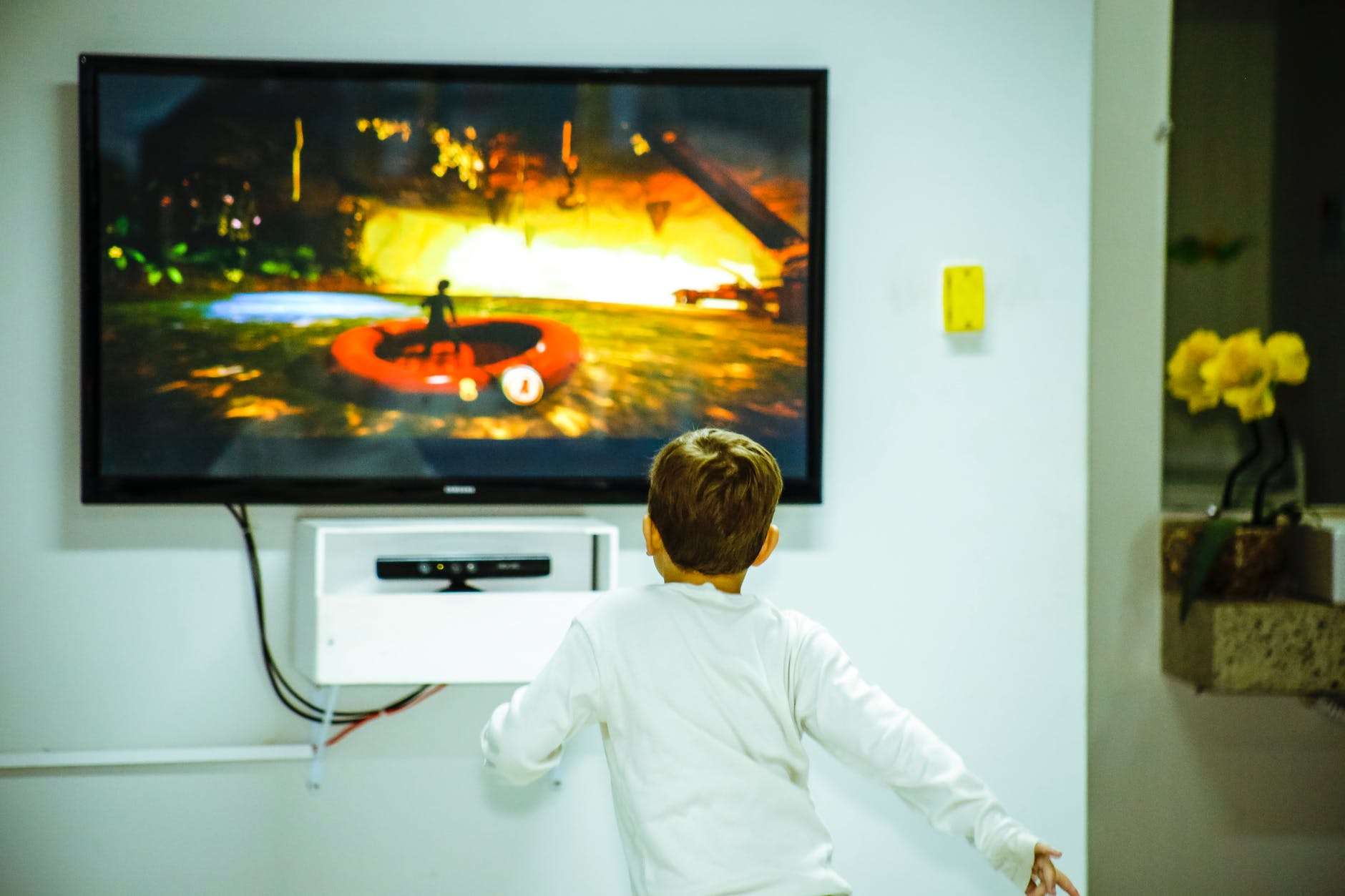
TEHRAN (IRAN): Hundreds of thousands across Iran marked the anniversary of its 1979 Islamic Revolution on Tuesday amid some of the highest tensions ever between Tehran and the US in the past four decades.
While Iranian President Hassan Rouhani gave a speech in Tehran's iconic Azadi Square denouncing the US, he also focused on encouraging the country to vote in upcoming parliamentary elections, even after officials disqualified thousands from running, including 90 current lawmakers.
Iran views high turnout as a vote of confidence in the country's Shia theocracy, something it wants to show as public anger still simmers over the country accidentally shooting down a Ukrainian jetliner in January that killed all 176 people onboard. Tehran for days denied its forces shot down the passenger plane before admitting to it in the face of mounting Wstern pressure.
The shootdown also marred funeral processions that drew millions of mourners for Revolutionary Guard Gen. Qassem Solemani, killed in a US drone strike in Baghdad.
"We should not withdraw from the ballot boxes," Rouhani called out to the thousands in the crowd who rallied in the city in freezing winter weather. "The ballot boxes are our savior."
There's also anger over Iran's long-faltering economy, which has been hard hit by the American sanctions. In November, protesters angered by Iran raising government-set gasoline prices by 50% blocked traffic in major cities and occasionally clashed with police. Amnesty International says more than 300 killed in violent protests and a subsequent government crackdown. Iran's government did not release any death toll though lawmakers said thousands were detained.
Rouhani called on voters to still turnout despite "possible complaints and criticism."
"I beg you not to be passive," he said.
State media said the rallies took place in more than 5,000 cities, towns and districts all around Iran.
This year's anniversary celebrations come amid ever-increasing bitterness between Tehran and Washington. Tensions have spiked since President Donald Trump withdrew the US from Iran's nuclear deal with world powers in May 2018. A series of attacks across the Mideast culminated with the US launching the drone strike that killed Soleimani in January. Iran retaliated with a ballistic missile attack targeting US forces in Iraq, injuring over 100 US troops.
State television referred to this year's anniversary as "Soleimani Dawn." His image could be seen on signs carried by demonstrators, as well as a large poster off to Rouhani's side during his speech.
The Iranian president spent much of his speech praising Soleimani, calling him both a great military commander and a "senior diplomat." Soleimani headed the paramilitary Guard's expeditionary Quds Force, which works across the Mideast with allies in Iraq, Lebanon, Yemen and elsewhere. The U.S. also long has blamed Soleimani for the spread of powerful roadside bombs in Iraq that killed and wounded American troops after the 2003 invasion of Iraq.
Iran's Islamic Revolution began with widespread unrest over the rule of Shah Mohammad Reza Pahlavi. The shah, fatally and secretly ill with cancer, fled Iran in January 1979. Ayatollah Ruhollah Khomeini then returned from exile and the government fell Feb. 11, 1979, after days of mass demonstrations and confrontations between protesters and security forces.
Iran later would vote to become an Islamic Republic, a Shia theocracy with Khomeini as its first supreme leader with final say over all matters of state. Anger over America allowing the shah into the country to receive cancer treatment in New York would later spark the takeover of the US embassy in Tehran by student militants and the subsequent hostage crisis, which kindled decades of enmity.
While Iranian President Hassan Rouhani gave a speech in Tehran's iconic Azadi Square denouncing the US, he also focused on encouraging the country to vote in upcoming parliamentary elections, even after officials disqualified thousands from running, including 90 current lawmakers.
Iran views high turnout as a vote of confidence in the country's Shia theocracy, something it wants to show as public anger still simmers over the country accidentally shooting down a Ukrainian jetliner in January that killed all 176 people onboard. Tehran for days denied its forces shot down the passenger plane before admitting to it in the face of mounting Wstern pressure.
The shootdown also marred funeral processions that drew millions of mourners for Revolutionary Guard Gen. Qassem Solemani, killed in a US drone strike in Baghdad.
"We should not withdraw from the ballot boxes," Rouhani called out to the thousands in the crowd who rallied in the city in freezing winter weather. "The ballot boxes are our savior."
There's also anger over Iran's long-faltering economy, which has been hard hit by the American sanctions. In November, protesters angered by Iran raising government-set gasoline prices by 50% blocked traffic in major cities and occasionally clashed with police. Amnesty International says more than 300 killed in violent protests and a subsequent government crackdown. Iran's government did not release any death toll though lawmakers said thousands were detained.
Rouhani called on voters to still turnout despite "possible complaints and criticism."
"I beg you not to be passive," he said.
State media said the rallies took place in more than 5,000 cities, towns and districts all around Iran.
This year's anniversary celebrations come amid ever-increasing bitterness between Tehran and Washington. Tensions have spiked since President Donald Trump withdrew the US from Iran's nuclear deal with world powers in May 2018. A series of attacks across the Mideast culminated with the US launching the drone strike that killed Soleimani in January. Iran retaliated with a ballistic missile attack targeting US forces in Iraq, injuring over 100 US troops.
State television referred to this year's anniversary as "Soleimani Dawn." His image could be seen on signs carried by demonstrators, as well as a large poster off to Rouhani's side during his speech.
The Iranian president spent much of his speech praising Soleimani, calling him both a great military commander and a "senior diplomat." Soleimani headed the paramilitary Guard's expeditionary Quds Force, which works across the Mideast with allies in Iraq, Lebanon, Yemen and elsewhere. The U.S. also long has blamed Soleimani for the spread of powerful roadside bombs in Iraq that killed and wounded American troops after the 2003 invasion of Iraq.
Iran's Islamic Revolution began with widespread unrest over the rule of Shah Mohammad Reza Pahlavi. The shah, fatally and secretly ill with cancer, fled Iran in January 1979. Ayatollah Ruhollah Khomeini then returned from exile and the government fell Feb. 11, 1979, after days of mass demonstrations and confrontations between protesters and security forces.
Iran later would vote to become an Islamic Republic, a Shia theocracy with Khomeini as its first supreme leader with final say over all matters of state. Anger over America allowing the shah into the country to receive cancer treatment in New York would later spark the takeover of the US embassy in Tehran by student militants and the subsequent hostage crisis, which kindled decades of enmity.
Download The Times of India News App for Latest World News.
more from times of india news
Get the app









